You should never have to choose whether to heat your home or eat and I hope this post will help you save money on your heating costs. The newspapers have reported recently that 80% of families are planning on rationing their heating this year, with the majority limiting their household heating to one hour in the morning and one hour in the evening and some people totally just going without. There are also local firms setting up warm banks. So many people are worried that they are not going to be able to pay their heating bills.
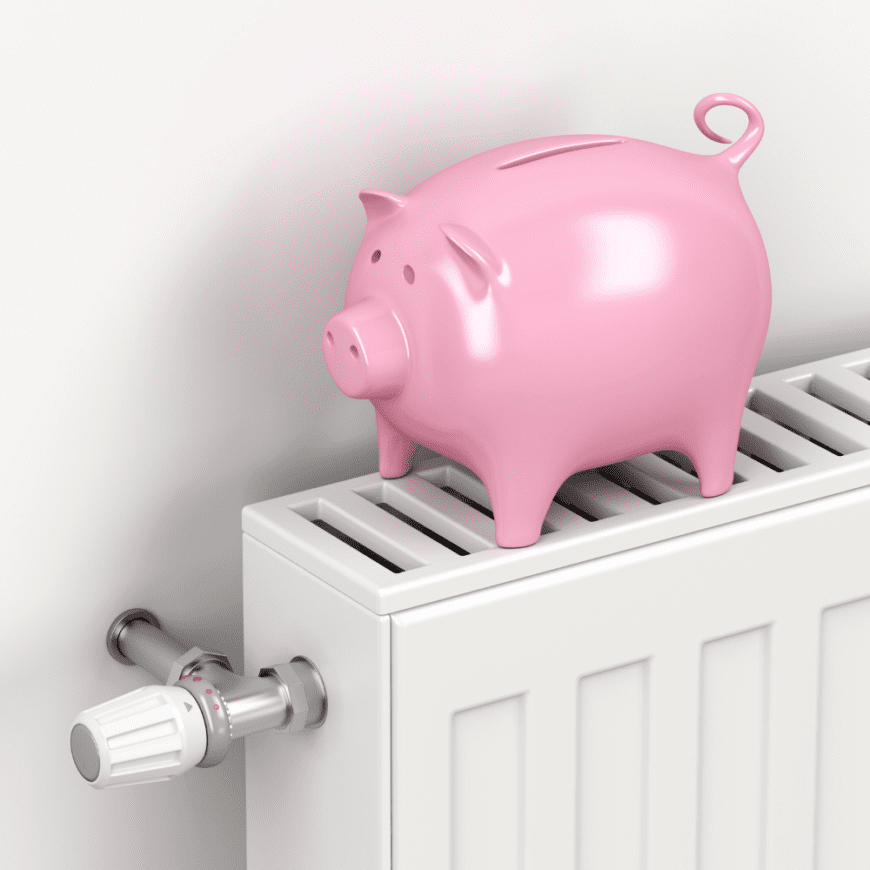
If you are like me, being cold makes you grumpy, add on the stress of bills and I am completely intolerable. The winter of 2010 was a turning point for me, the coldest winter on record and I lived in a flat where the landlord didn’t feel it was important to fix the boiler until February (it broke in October).

Save Money On Heating Costs
I learned valuable lessons that I would like to share with you on how to stay warm and how to save money on heating costs. A lot of these tips came from the older generation as they didn’t rely on central heating.
Get your Boiler Serviced
Make sure you get any heating system work done before the cold weather sets in. It is so important that heating appliances are working efficiently to reduce any energy usage.
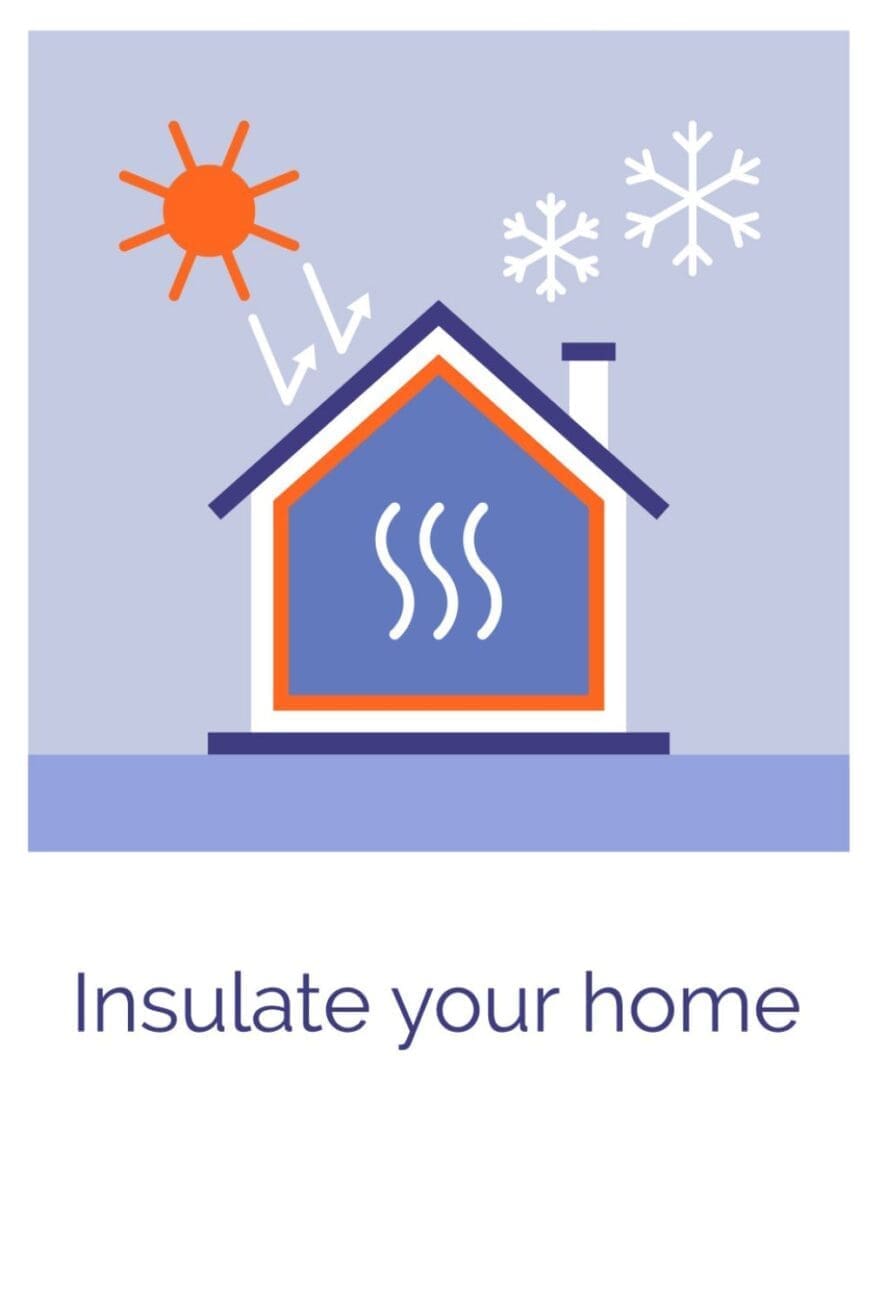
Insulate your home
If you own a property in England or Wales you can get recommendations and assistance for home improvements that could make your property cheaper to heat and keep warm. Effective insulation in your attic, loft and cavity wall insulation endure that the heat remains inside to keep your home toasty.
Find the Drafts
Drafts cause a big problem, particularly in old houses, if you are using the central heating you might as well go and pour all the money in your purse out onto the street. The main places to check would be around window frames and door frames, particularly if you are in an older building and the letter box. It is amazing how much cold air can get in through the letterbox. We have a draft excluder along the bottom of our front door and a curtain across the door to keep the draft out. If you have an inefficient fireplace then Close Fireplace Dampers and Flue and don’t use it over winter, but it you are using your fire make sure you have the chimney swept yearly.

Insutalate the Windows
When giving your windows the once-over, you can even do the candle test. All you have to do is light a candle and hold the flame near the windows (but don’t burn down the curtains!). If you see the flame flicker, it could mean there’s an air leak.
If you do have a leak on your hands, fixing it isn’t too hard you can caulk them or use weather stripping and seal up those leaks. It’s not glamorous, but it’s an easy fix that will save you up to 20% on your heating bill. I grew up in an old house with sash windows and every autumn my dad would install Insulating film on the windows.
Air Circulation
Open internal doors during the day to allow the heat from the sun-drenched rooms to filter through the house. During the winter, houses get stuffy due to the windows being closed and us spending more time in doors, during the day when you are not at home, let the air circulate. Close the internal doors during the evening to keep the heat in the room you are in. Consider congregating in a smaller room, a smaller room takes less time and energy to heat and will remain warmer for longer. Encourage the children to close doors behind them when going in and out of rooms; my mother was a big fan of “were you born in a barn?”
If you have ceiling fans then reverse the fan direction so that the blades turn clockwise during the winter. There should be a small switch at the base of the fan. The clockwise direction of the blades should pull air upward, so that warm air that’s trapped up near the ceiling travels down the walls and around the room. To see if the blades of the fan are spinning the correct direction, stand beneath it. You should not be able to feel air blowing down on you.

Lower the Temperature
Reducing the temperature of your heating will save you money straight away. The Energy Saving Trust estimates that turning your thermostat down by 1 degree will save you 10% on your bill. We have a programmable smart thermostat (Hive Active Heating) and we can set it to an accuracy of 0.5 degrees centigrade. So we can have it at 17.5 degrees rather than 19. It is also a Programmable thermostat and we can set different programmes for each day of the week also it isn’t limited to heating it works on our water heater too.
In addition to lowering the thermostat on your central heating system, you can install thermostatic radiator valves on each of your radiators so you only heat the rooms you use.
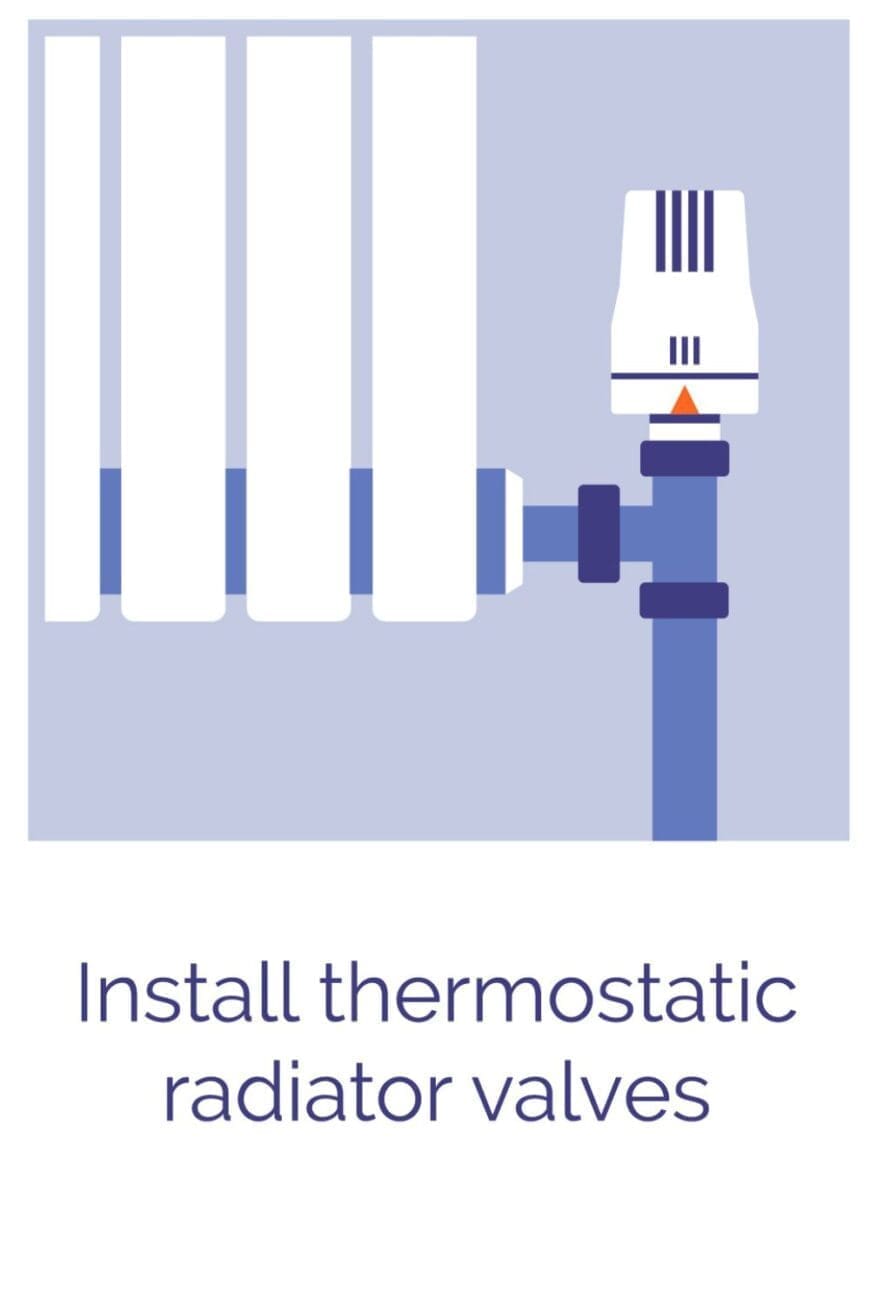
Your hot water cylinder thermostat should be set at 60-65ºC. This is high enough to kill off harmful bacteria such as Legionella, it also means you’re not paying to overheat the water and will reduce water heating costs.
Layer up
Everyone has been told at least once in their lifetime to “wrap up warm because it’s cold outside”, well, the same applies when it’s cold inside. Layer up. Lots of thin layers will help keep the heat in more efficiently than one thick jumper. A nice pair of winter pyjamas for the kids, plastered in their favourite cartoon character is essential. If the layers aren’t working for you, then snuggle up underneath a blanket, the more people you can snuggle under one blanket, the more heat that will be created. Make sure you wear thick socks and slippers at all times, everyone knows heat escapes through your feet quicker and if your feet are cold, the rest of you is likely to feel cold. Also, consider sleeping in socks, if you suffer from cold feet during the night.
Have a warm dressing gown beside the bed to put on first thing in the morning and the last thing at night after your bath.
Line Your Curtains
A good set of lined curtains is a must. The curtains should be long enough to reach the window sill. In a bay window with a radiator under the window sill, consider lifting the curtains up to the window sill to allow the heat to escape the radiator so it is not going straight up the inside of the curtain. Curtains should be opened during the day to allow the warmth of the sun to heat the room (for free) and then closed in the evening to keep the heat in. In an excessively drafty window, check the top of the curtains to see if there is a lot of cold air getting in, if so, a blanket or towel rolled up on top of the curtain pole can help eliminate this.
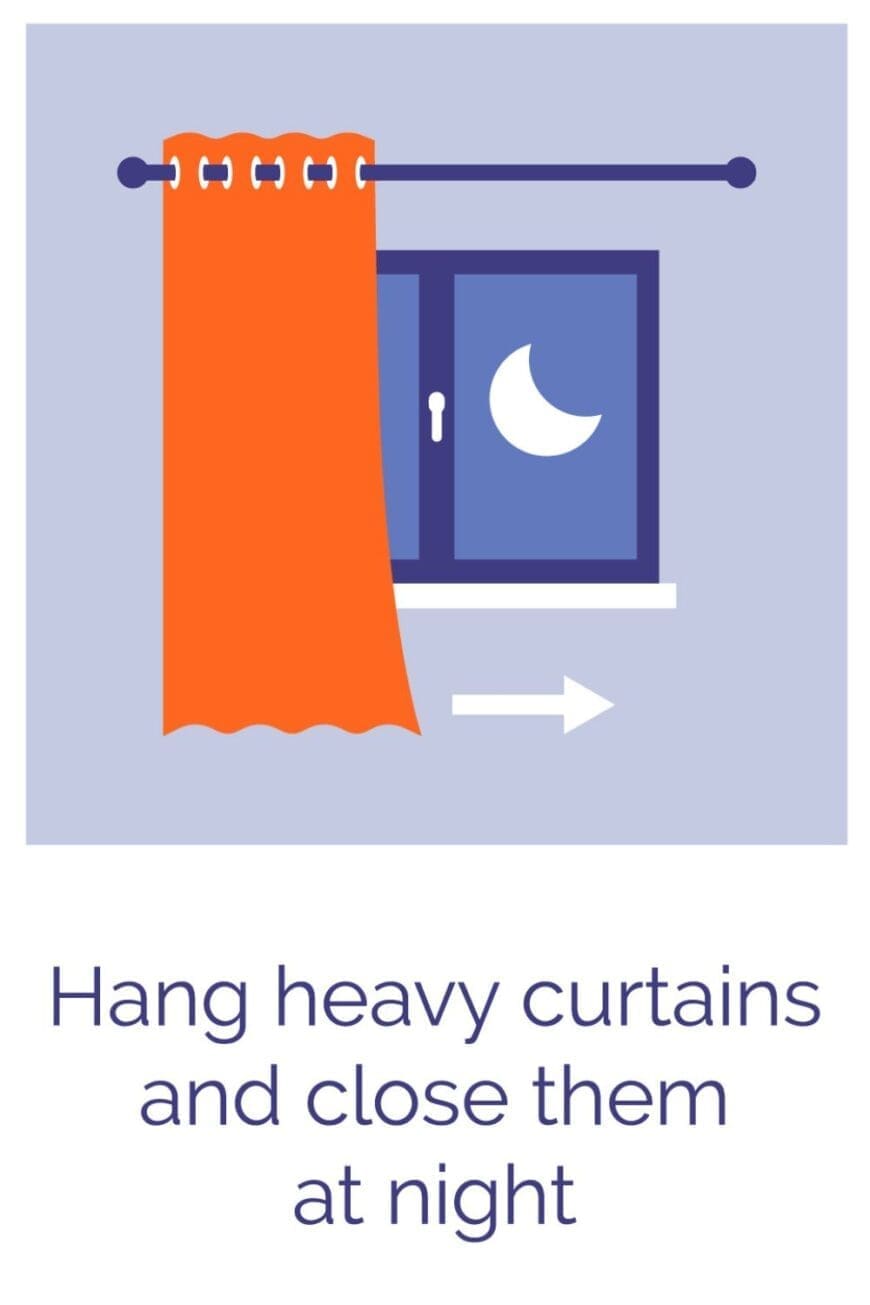
If you have blinds and curtains then make sure you lower the blinds too. If you can not afford lined curtains then keep an eye out on Facebook Marketplace nad charity shops and use two pairs instead of one.
A Warm Bed
People who work in the industry will advise you to have one duvet for the summer, a lighter one, and one heavier duvet in the winter. This does not have to be the case. A medium tog duvet will suffice for both and just like clothes layering works really well as it traps the warm air between. We are a fan of flannel sheets and bedding over winter.
If you cannot afford an electric blanket, like me, put a regular fleece or wool blanket under your fitted sheet, this will help you maintain some extra body heat when sleeping and make the bed cosier. Place a heavy wool blanket over the top of your duvet to create some weight on top of the duvet and stops cold air from getting in. And then there is always the old reliable, a lovely toasty hot water bottle, I wouldn’t be without mine, it lives against my feet all winter.
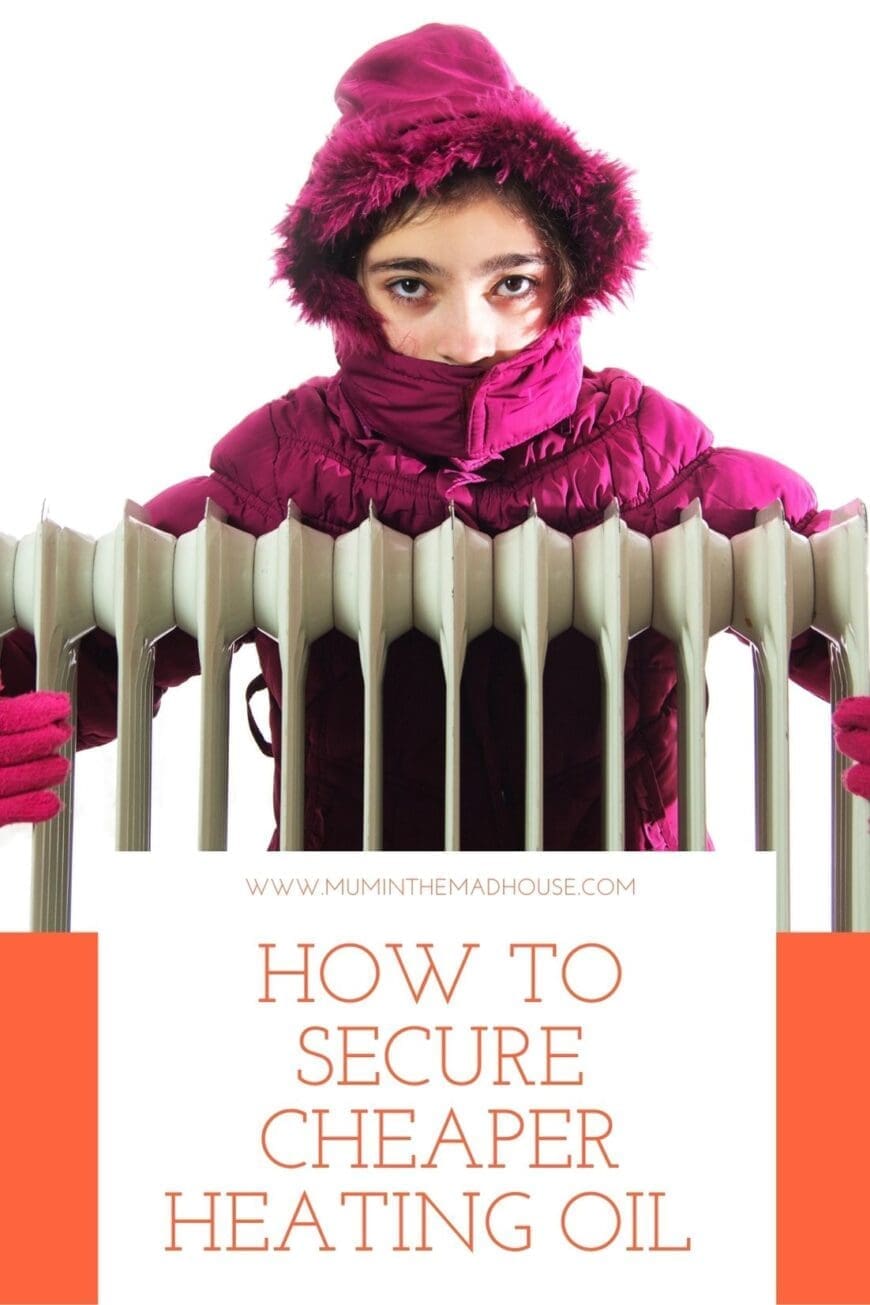
Secure Cheaper Heating Oil
Unfortunately, heating oil falls outside the energy price cap and if you live in a rural area like I do a lot of people (including my Brother in Law and Father in Law) have no alternative to heating oil to heat their homes. The Government has now confirmed that households that use heating oil and LPG to heat their homes will get an additional £100 to help with energy bills this winter Top tips for buying oil are:
- Always compare as many quotes as possible from different suppliers, and to do so regularly so you can monitor when and where you can get the best prices.
- Never leave it until last minute.
- Club together if you can with others to bulk buy – Join a heating oil club (also called a heating oil buying group) free of charge is a cost-efficient way to buy cheaper heating oil. Citizens Advice estimates that buying this way can knock 10% off your heating oil bills.
- Protect and maintain your tank and boiler.
- Don’t be afraid to haggle on price.
- Avoid added fees – Some companies aren’t clear upfront about how much they are actually going to charge you. Make sure you are clear on charges for using debit or credit cards or for delivery costs.
According to oil industry advice, you could save hundreds of pounds a year if you change to a modern condensing boiler that has up to 97% efficiency, compared with a model that’s more than six years old. But a new oil boiler will cost anywhere between around £1,300 and £3,200, as well as between £2,000 and £3,000 for installation.

And if all else fails, have a hot chocolate with plenty of marshmallows. It always warms people up in the movies, so it must be true.
Other Energy & Money Saving Tips:
- How to tighten your budget without impacting upon family life
- Tips to Save Energy in the Bathroom
- How to Save Energy when Cooking
- Budgeting Tips for University Students
- Frugalist Guide to Staying Fashionable on A Budget
- How to create a magical Christmas on a budget
- Teaching kids budgeting – Cash versus card
- Cooking with kids – budgeting, buying and cooking
- Creating a family budget
- Budget Pouches and Cash Budgeting
- Decorating on a Budget
- Rising Costs of Energy and Inability to Pay – An insiders guide
- Money Saving Tips For A Cosy Garden All Year
- Eight Ways to Help You Be Responsible with Money
- Money-saving tips for UK family holidays
- How to be a Savvy Spender this Christmas

Comments are closed.